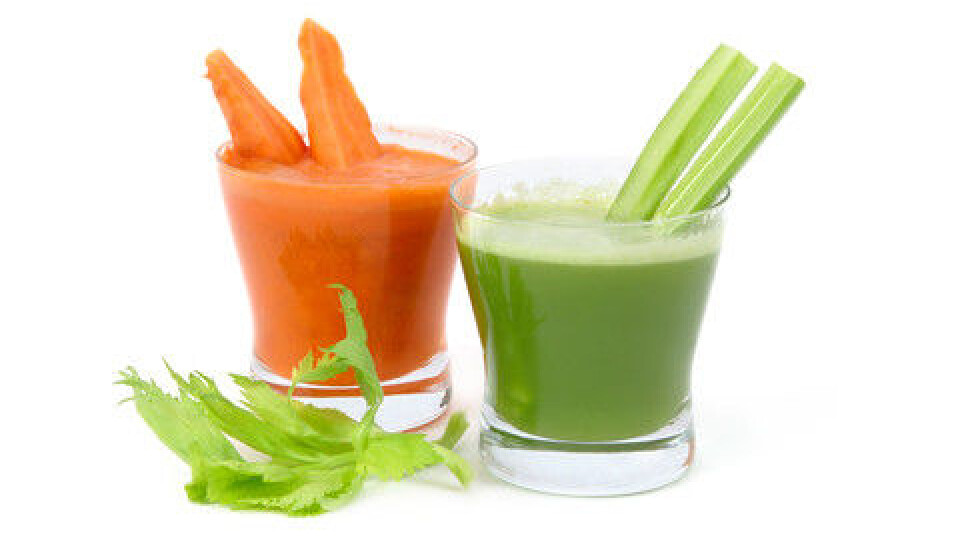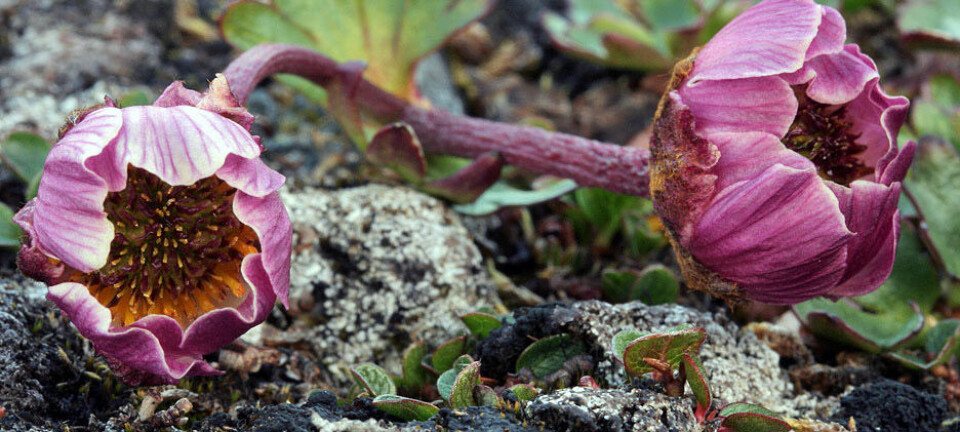
Plant sap is twice as sweet as cola
A new study has looked at how sweet plant juice needs to be to give the plant the optimal energy yield. Ideally, it should be twice as sweet as cola.
It’s all about how viscous the organic nutrients, the sap, in the plants are. This viscosity is determined by the sugar contents in the sap.
If the sap is very watery, it does not transport enough sugar around the plant.
And if it’s thick as honey, the plant cannot get the sap to move at all.
The sap should ideally be somewhere in between these two extremes – with a sugar concentration of around 20-25 percent, which is equivalent to twice as much sugar as a regular cola (10 percent sugar).
The optimal sugar content for plants is at exactly 23.5 percent. Here, the actively transporting plants come close with an average sugar content of 21.1 percent. Trees with passive transport are a bit further away at 15.5 percent.
“When sap has a sugar concentration of between 20 and 25 percent, the plants get the optimal yield from the energy they put into transporting the sap around,” says Kaare Hartvig Jensen, a Danish postdoc in plant physiology at Harvard University in the US.
“If the concentration is higher than that, the plant uses too much energy on transporting the sugar, and if the concentration is too low, the plant doesn’t get enough sugar from the energy it puts into the transportation. This follows the same mathematical logic that we see in the optimal concentration of red body cells in the blood or cars on the motorway.”
Sap is naturally close to the optimal concentration
Jensen’s new study of plants and their organic nutrients, published in the Journal of the Royal Society Interface, also shows that the plants have reached the same optimal figure as he has, all by themselves.
In any case, the plants’ natural sugar concentration is very close to the optimum:
”Published studies of the sugar content in the sap of 50 different plant species show that plants generally lie within this optimal 20-25 percent range,” he says.
Maize and potatoes are far too sweet
Although most plants have sugar concentrations of between 20 and 25 percent, there are some plants that fall outside of this optimal range.
Plants that are sweeter than the optimal are generally crops such as maize and potatoes. Their sugar concentration can reach as high as 40 percent.
“We observed that as soon as humans have had the plants in their hands, the sugar concentration in the sap increases,” he says.
“This could perhaps be because the plants are nurtured and cared for and do not need to fight for space in nature with other plants. Maybe this is why they can live with a sugar concentration in the sap that’s twice as high as the optimal, even though it reduces their fitness.”
Herbs hide their goodies
When it comes to hitting the sweet spot for sugar concentration, nothing can beat herbs.
Herbs usually grow in places where they are exposed to grazing animals such as cows that do not shy away from munching the occasional leaf or two.
As a response to this, the herbs have developed a tactic in which they actively use energy on transporting the sugar into the piping system inside their stem, thus preventing it from ending up between the jaws of a ruminant.
”Since the herbs actively move their sugar into their transport tissue, they can concentrate the sugar content so that it settles within the 20-25 percent bracket,” says Jensen.
Trees have lower sugar contents
Trees, unlike the herbs, rarely lose their leaves to ruminants, and have therefore not developed an ‘active’ transport system. The trees transport their sugar ‘passively’, i.e. the sugar can only be transported from areas within the plant that have a high concentration to areas with a low concentration.
This obviously requires a higher sugar concentration in the leaves than in the transport tissue.
Since the trees do not have an active transport system, they cannot concentrate their sugar contents the way the herbs can, and must therefore settle for a sugar concentration of around 15 percent.
”The optimal sugar content for plants is at exactly 23.5 percent. Here, the actively transporting plants come close with an average sugar content of 21.1 percent. Trees with passive transport are a bit further away at 15.5 percent.”
Jensen cannot, however, say exactly what effect it has on the tree to be eight percent off the optimal.
Findings could be important for agriculture
The findings of this study raise two interesting points:
Firstly, growers of agricultural plants should know that it has an effect on the plant’s general fitness – i.e. how much nurturing it needs to survive – when the sugar content in the sap changes.
“Secondly, it’s funny to note that the very same mechanism we’re seeing in the concentration of sugar in sap also applies to the concentration of red body cells in the blood or cars on the motorway: the higher the concentration, the harder it becomes to maintain a steady flow,” says Jensen.
“This is why there is an optimum for the concentration of sugar in plants, red body cells in the bloodstream and the number of cars on the roads.”
-------------------------
Read the Danish version of this article at videnskab.dk
Translated by: Dann Vinther







